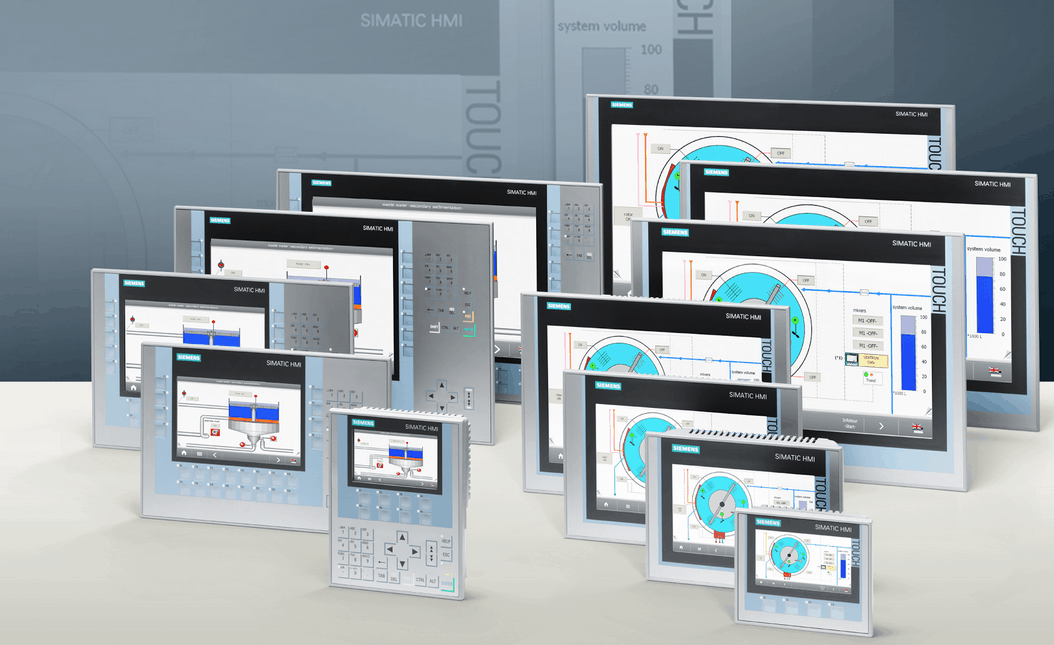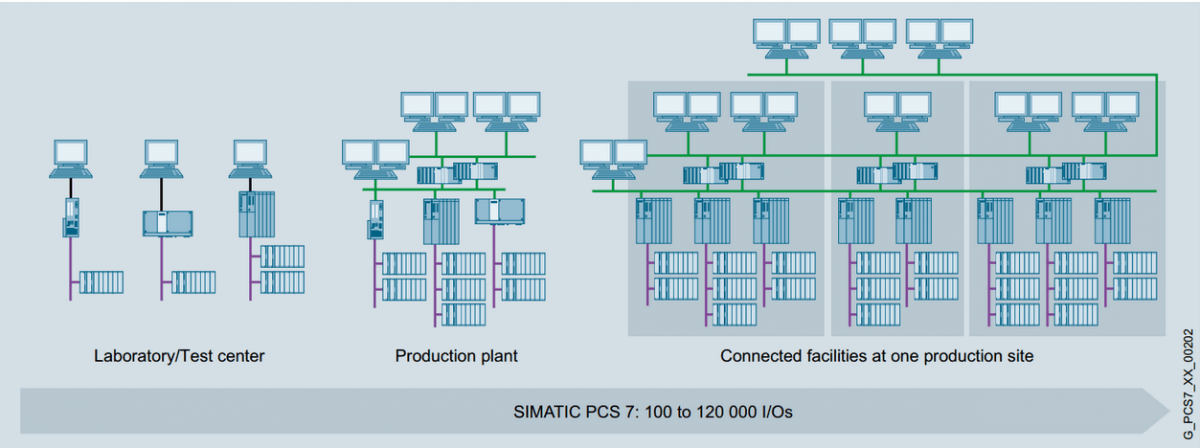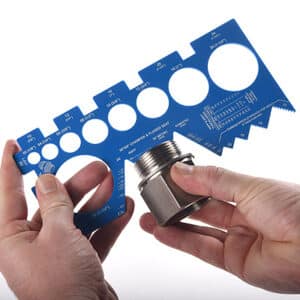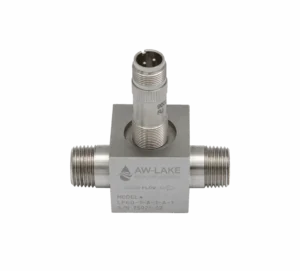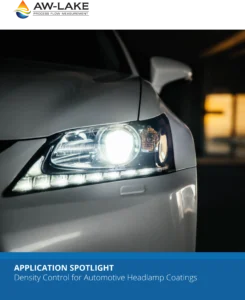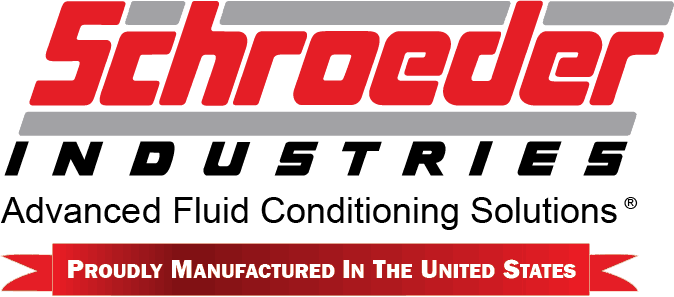David Ward | December 2nd, 2014
One of the questions I’m frequently asked is “What is the difference between a DCS and a PLC?” The answer isn’t simple as a PLC/HMI combo can do a lot of the same things a DCS does. The best approach is to list what your process needs, and see if you need enough features to justify a DCS.
PLC Definition
Since you’ve landed on this blog, you probably know what a PLC is. Just in case, a PLC is a Programmable Logic Controller. This controls your process or machine via a custom program written most often in ladder logic, but can also be written in structured text or function blocks. Some examples are the Allen Bradley ControlLogix controllers, as well as their MicroLogix, CompactLogix, and SLC lines. Siemens has the S7-300, S7-1200, and S7-1500. (You can also use the S7-400 controllers, though they are more often used in their DCS package.)
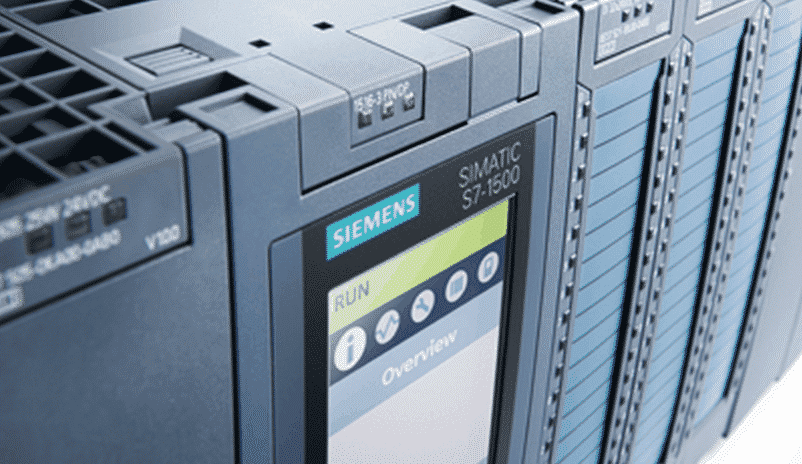
While You’re At It, Throw in an HMI…
It’s hard to talk about PLCs without also talking about HMIs, or Human Machine Interfaces,which displays a graphical representation of your process or machine for operators to monitor and control. For Allen Bradley products, you can choose between FactoryTalk View SE (Site Edition) or ME (Machine Edition). For Siemens products, you can choose between several levels of WinCC.
You can use a PLC without an HMI, but if the process/machine will be regularly monitored and controlled by operators, an HMI is necessary.
DCS Definition
DCS stands for Distributed Control System. A DCS typically covers an entire process, and is capable of covering an entire plant.
A DCS combines one or more PLCs with an HMI, and allows the integrator to build both together. The project is often developed with the entire DCS in mind so that all aspects of the system are developed together – instead of developing the PLC first, then the HMI, followed by alarms, historian, etc.
A DCS takes the PLC/HMI combo and combines several other features into an integrated package:
- Servers and clients. The servers gather tag data from the PLC(s), contain the graphics, and serve both out to clients for operators to use.
- Redundant servers, controllers and/or networks.
- Synchronized alarming and security.
- Historical data logging and trending.
- Batch management.
Some popular DCS packages are Siemens PCS7 and DeltaV.
Why Go with a DCS When I Can Add All Those Features to a PLC/HMI Combo?
It’s easy to look at dollar signs and quickly dismiss a DCS. After all, with some customization, you can do a lot of the same things a DCS does in a PLC/HMI combo.
The choice can be summed up in the declaration – “Pay me now, or pay me later”. That’s a little brash, but it’s true. You can pay more upfront for the software, or save money upfront and pay more down the road in engineering time.
If you have a large process or a process that you hope will expand, consider paying more upfront for a DCS, and it will save you money over time. You will pay your integrator less in engineering time because the alarming, security, tag logging and trending, block icons and face plates and even the logic blocks are already developed, tested and, for some packages, used in plants all over the world.
What Are The Benefits of Each?
Now, onto the other major differences between the two. I’d like to preface this section by saying that there are always going to be exceptions. These are general differences and advantages, and are not meant to be exclusionary.
What Are the Benefits of a PLC/HMI Combo?
The biggest benefit I’ve seen to a PLC is that it is easier for plant personnel to implement and configure internally than a DCS. There are many technicians and engineers that have experience with ladder logic, and if you have one or more on your staff, you may decide to take care of your processes in-house.
Also, if the PLC will be controlling a machine that requires very fast response times, a PLC is the best choice. A DCS controller can have a fast response time, but that’s not what it’s intended for.
Furthermore, purchasing a PLC allows you to buy only the software with the features you need. If you have a simple application or a standalone skid system, a PLC (with a small HMI) might be all you need. If you were to buy a DCS, you might shell out a lot of money for features you don’t need.
Finally, in a pinch, a PLC can be installed, programmed and ready to go very quickly.
PLCs are often used in:
- Machine automation (quicker processing time).
- Skids, stand-alone systems (doesn’t need to be part of plant-wide system, or is developed by an OEM).
- Utilities (lower in cost).
What Are The Benefits of a DCS?
In addition to combining one or more PLCs with one or more HMIs, a DCS offers:
- High availability via:
- Redundant Controllers.
- Redundant operator system servers.
- Redudant networks.
- Server-client relationships.
- Reduced engineering time.
- Shorter start-ups.
- Minimal troubleshooting of included features.
- Controller code built with entire system in mind. Code includes settings for:
- HMI graphics and faceplates.
- Historical data and trending.
- Alarms.
- Operator features and security.
- Lends itself to better organization and consistency than a PLC/HMI combo.
- Easily integrated with:
- Batch management.
- Process Historian.
- OPC server.
DCSs are often used in:
- Large, plant-wide processes.
- Batch processes.
- Chemical plants .
So, How Do I Choose Which One I Need?
- What’s the long term plan for the facility? If you have any intent of tying it all together into a DCS, and the process you’re currently looking at has a part in it, there’s no time like the present to start your DCS migration.
- Is the process a stand-alone, supporting or skid system? If so, a PLC and HMI could be all you need, and if you decide to migrate the rest of the plant to a DCS in the future, this system could stay a PLC/HMI combo.
- Do you want to configure, build and commission the system yourself? If so, and you don’t have formal DCS training, you should put in a PLC and HMI combo. Most DCS packages are so complex that they require formal training, and without it, you could get into trouble.
- Do you need a high availability system? What if the controller dies, or your HMI goes down? You might need redundancy for your controllers and/or OS (operator system) servers. If so, consider a DCS.
- Are you going to need a historian, multiple clients, a trend package, batch system, and other DCS features? Granted, there are HMI packages that provide all these features, but keep in mind that a DCS provides them as well.
- Is it a large system that you will have an integrator build and commission? If so, I strongly recommend a DCS. It will save you time and money in the long run.
Contact the Author
If you have any comments or questions about the material, please do not hesitate to contact me through the comment section. I would love to hear your answers to the questions as well.

